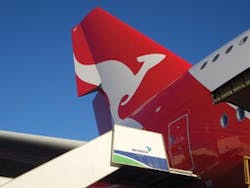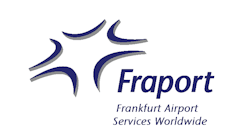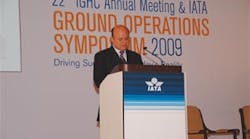Airline alliances are now an accepted part of the industry. Star Alliance, oneworld and SkyTeam reach out across the world in an attempt to offer their customers a seamless experience.
Although a successful strategy for airlines — with an economic impact that goes straight to the bottom line — the alliance model hasn’t really taken off in the ground operations sector.
Alain Chapgier, secretary general of Aviance, the first international alliance for ground handlers, agrees this is something of a surprise, especially given the benefits it can bring to smaller, independent operators.
“An alliance is a ‘third way,’” he says. “When we started Aviance in 1999, consolidation was very strong, and there were a number of global players such as Worldwide Flights Services, Swissport, Globeground and Menzies. As a small independent company, the options were limited. It seemed the only alternatives were to disappear or be bought.
“But we recognized the formation of an alliance could be an alternative solution,” he adds. “It was benefiting the airlines, so why not employ it for other aviation sectors?”
The roots of the alliance were formed from a tie-up between Alyzia, the ground handling arm of Aéroports de Paris, and the UK’s Gatwick Handling International (GHI). This fledgling pairing eventually grew to become Aviance, which today encompasses 12 members spanning four continents. Each Aviance member is financially independent, but adheres to the alliance’s operating code of conduct and service standards.
In total the alliance’s members have 21,700 staff, operate at 126 airports in 18 countries, and handle around 146 million passengers and almost 1.5 million tons of cargo.
The aviation industry has changed markedly since Aviance’s inception — 9/11, spiraling fuel prices and a severe global economic recession have all had a dramatic impact — but Chapgier is certain the raison d’être for alliances still holds true today.
“Yes, these are difficult times,” observes Chapgier. “The price pressures on carriers are being transferred to ground handlers, and they need to find a way to cut costs and improve revenue. Alliances are recognized as one solution.”
All around benefits
So can the ground handling alliance really be a win-win solution for all involved? Chapgier indentifies the benefits for members as threefold. Operations are enhanced through continual collaboration. Constant benchmarking exercises eventually evolve into a decision on best practice, which becomes the Aviance standard, deployed alliance-wide.
Purchasing advantages maximize available budgets. Acting as a single buyer, Aviance can negotiate volume discounts members wouldn’t have been able to obtain on an individual basis. Additionally, purchasing decisions can be optimized, with equipment pooling wherever possible.
Finally, there are revenue synergies — largely as a result of the network effect. “For example, let’s say our Spanish member, Flightcare, wants to bid for work with Air Algerie,” explains Chapgier. “Well, in France we have very good contacts with that company. So we can make introductions and support any bid through the alliance concept.”
Bob Gurr, director sales and marketing for South African member BIDAir Services, agrees that exposure on an international level is a major advantage. “Operating in a relatively small market, such as South Africa, is a challenge in many instances — especially with new entrant carriers who are already served by multinational handlers,” he says. “Our membership of Aviance enables us to make use of the numerous airline contacts that our members have developed over a number of years.”
The alliance model benefits carriers too, primarily through consistency of product delivery as well as standardization within the product itself — what Chapgier outlines as the “Aviance Difference.” “In short, it simplifies the whole process for the airlines, and our standard agreement ensures a defined level of quality,” Chapgier confirms. “They know exactly what they are going to get, no matter which alliance member is doing the actual work.”
He identifies Aviance’s ability to link local expertise and knowledge with all the benefits of a big player as key to delivering on its promise. “Çelebi, for example, knows the Turkish market inside-out, and an airline can utilize that experience secure in the knowledge that they will also receive Aviance standards and quality,” notes Chapgier. “It’s a prime example of local specialists delivering the kind of added value that isn’t possible when dealing with a mega-provider.”
Challenges ahead
Although the alliance model offers the industry a third way, it is not immune to challenge from both from within and without the aviation industry.
Governmental foot-dragging in monopoly markets — and a disinclination to enforce regulations even in some more liberalized regimes — continue to dog the competitive agenda.
Greater liberalization would facilitate the alliance model, exploiting the synergies achieved through cooperation, standardization and harmonization, as well as providing a catalyst for new members to sign up.
But liberalization is a double-edged sword. Global players will also look to exploit any relaxation in the markets by snapping up the smaller fish. Chapgier does feel the threat from major players consolidating the industry has receded, compared with a decade ago, although rising stars with global ambitions continue to emerge.
Emirates ground handling subsidiary Dnata, has acquired two Aviance members — Swiss outfit Jet Aviation in 2007 and Aviance UK‘s London Heathrow operations in 2009. Neither company is continuing its alliance membership.
The secretary general is stoic about such changes. “Any alliance must be dynamic,” he says. “It is inevitable Aviance will change its shape and size over time. It does not alter the alliance concept of providing airlines with a choice, and actively encouraging best practice within the industry. Just as members have left the alliance, so we have gained members too. There are many positives in change.”
Growth of the alliance has brought a different kind of challenge to the fore — governance of the organization. Aviance has a “light management” structure with a series of committees — covering areas such as technology and purchasing — overseen by a Board of Directors.
Decision-making has to take into account the considerable differences in size and culture of the members. Alyzia is part of Aéroports de Paris, a huge state-owned enterprise, while Israel’s Laufer Aviation is a small, family concern.
“Smaller members have a much clearer focus on the bottom line,” explains Chapgier. “Bigger companies obviously operate in a different climate, and have more bureaucracy to handle.”
So isn’t this like trying to knock square pegs into round holes? Not so, stresses Chapgier, noting that the pundits were predicting airline alliances would suffer similarly from the difficulties of trying to harmonize a host of different commercial and operational cultures.
What has gradually emerged is a definitive “Aviance culture.” “It is something that comes naturally over time,” notes the secretary general. “All the members are in constant contact. There are meetings, phone calls and very good relationships have been formed. Trust and confidence inevitably develop.”
Exchange of information and best practice is another key resource: “We have even had staff exchanges between members — aimed at increasing the skill set without racking up huge costs,” he says. “Some have sent people to learn about handling the Airbus A380, for example, while others are being taught about VIP flight operations.
“Flightcare knew all about low-cost carrier operations, and they’ve passed on this knowledge so any member can offer the same depth of experience,” he continues. “This is one of the greatest benefits of an alliance. We’re all as strong as the strongest member.”
Chapgier accepts that the information cascade isn’t always as quick as he would like, and speedy decision-making isn’t necessarily a natural fit for the alliance model. However, he insists this leads to a more considered approach, and ultimately greater long-term benefits.
Some members are now exploring IATA’s Safety Audit for Ground Operations (ISAGO), for example, and will trailblaze for the others. Chapgier believes the lessons being learned will allow all members to offer better practices in safety management.
Staged approach
Aviance’s growth over its first decade has, both for its members and their airline clients, proven that the alliance model is an effective “third way” to deliver comprehensive ground services.
Certainly Chapgier sees its existence as more necessary today than ever. “In fact, we even had calls for more ground handling alliances at the 2009 IATA IGHC in Cairo,” he notes.
Despite such industry validation, Chapgier isn’t looking for a wild increase in numbers for the future. Instead, he prefers staggered growth similar to the approach utilized by the airline alliances.
“We need to expand, but in a controlled manner,” he says. “If we grow too quickly then new members aren’t being fully integrated, and the growth becomes superficial. That said, we can’t stick at our present size because our current membership could drop, as we have seen.
“With one or two new members a year, we can fully explore harmonization and exploit any synergies to best effect,” Chapgier concludes. “That way Aviance will keep on increasing its relevance to the industry.”




